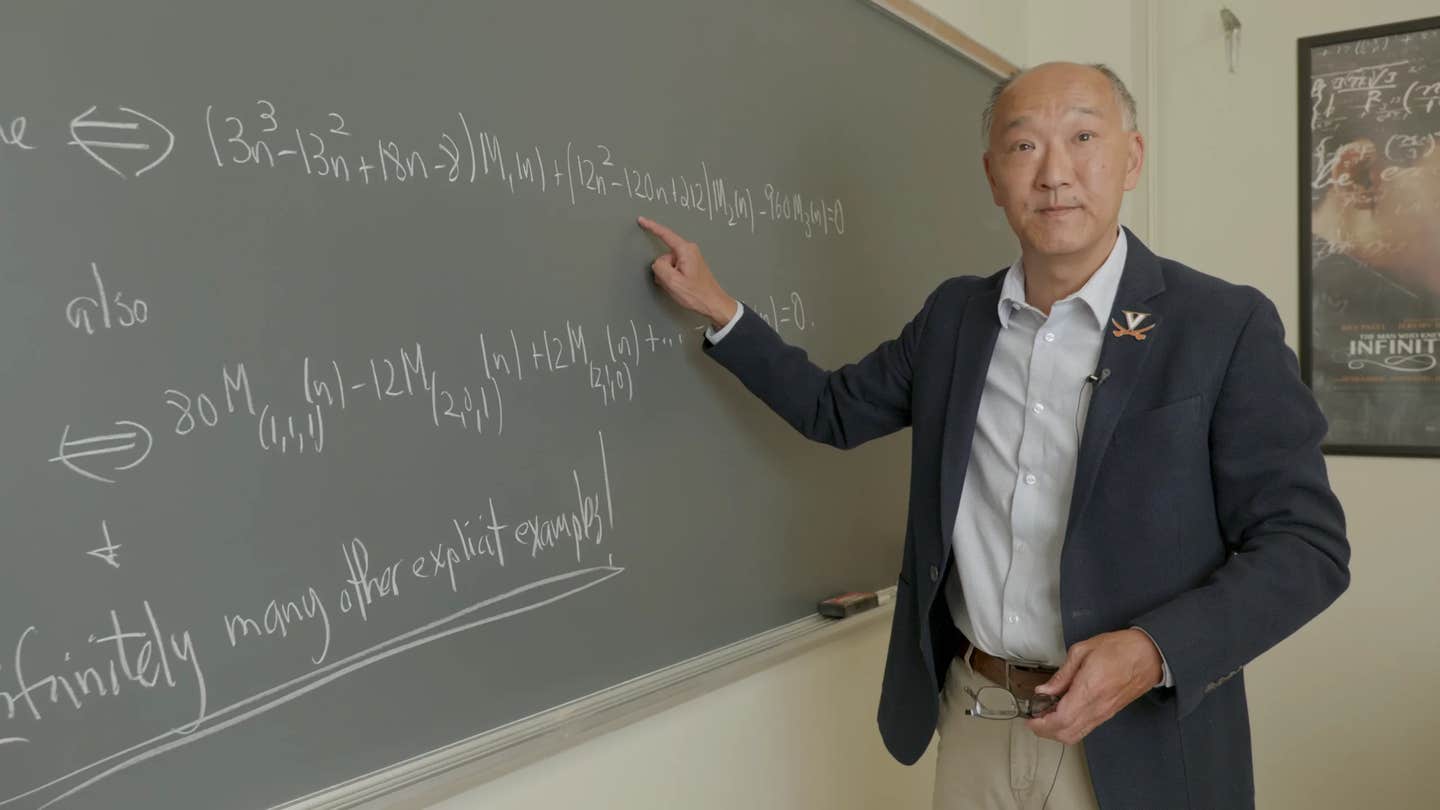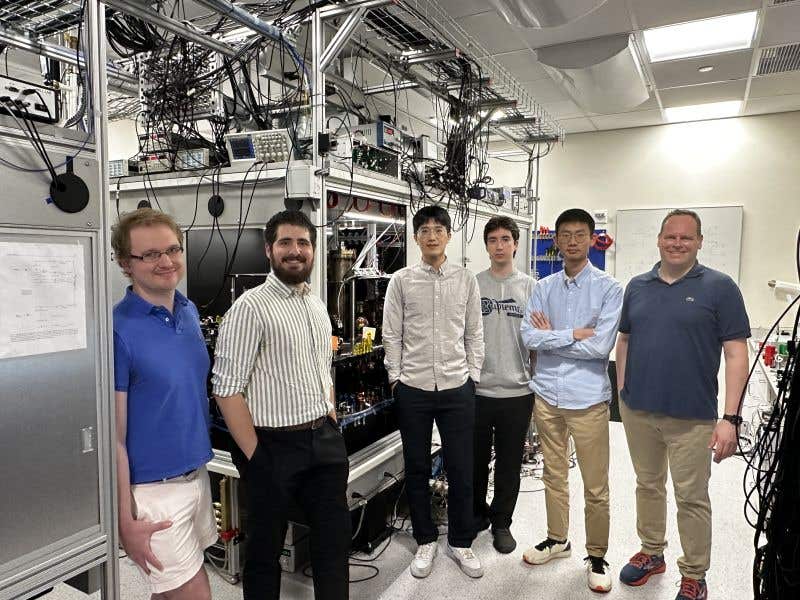Mathematicians discover clever new way to identify prime numbers without dividing
New research links prime numbers to partition functions, offering fresh ways to detect primes without checking divisibility.

A team of mathematicians has discovered a surprising way to detect prime numbers. (CREDIT: UVA)
Ken Ono, a top mathematician and advisor at the University of Virginia, has helped uncover a striking new way to find prime numbers—those puzzling building blocks of arithmetic that have kept mathematicians guessing for centuries. He and his colleagues William Craig and Jan-Willem van Ittersum discovered how to use something called partition functions to detect primes.
Their findings, published in Proceedings of the National Academy of Sciences (PNAS), earned them a runner-up spot for the 2025 Cozzarelli Prize in the physical sciences.
Their work connects two major parts of number theory: prime numbers and partitions. While the smallest prime numbers like 2, 3, and 5 are easy to identify, the mystery deepens with large ones.
The biggest known prime is more than 41 million digits long. And there’s an infinite number of primes still to find. Identifying patterns among them is one of math’s greatest challenges. That’s where Ono’s new method comes in.
Cracking the Prime Code with Partitions
The idea may sound simple at first. A partition is just a way of breaking a number into a sum of smaller whole numbers. Take the number 5. It can be split seven ways: 5, 4+1, 3+2, 3+1+1, 2+2+1, 2+1+1+1, and 1+1+1+1+1. But hidden in those combinations are clues. Ono’s team showed that partition functions—mathematical tools that count these splits—can be used to detect whether a number is prime.
“It is remarkable that such a classical combinatorial object—the partition function—can be used to detect primes in this novel way,” said Kathrin Bringmann, a mathematician at the University of Cologne, who was not involved in the study but has worked with members of the team.
The paper reveals that prime numbers solve certain polynomial equations built from partition functions. These equations, called Diophantine equations, have fascinated mathematicians for centuries. The team proved that primes are the exact solutions to an infinite number of these equations. This gives rise to “infinitely many new ways to detect prime numbers without having to check divisibility,” said Ono.
Related Stories
That’s a major shift. Up to now, most methods to test if a number is prime involved checking whether it could be divided by smaller numbers. That works for small numbers, but becomes unmanageable for extremely large ones. Ono’s method avoids that entirely by using partition equations that, when satisfied, indicate a number is prime.
One such equation the researchers shared is:
(3n³ − 13n² + 18n − 8)M₁(n) + (12n² − 120n + 212)M₂(n) − 960M₃(n) = 0
Here, M₁(n), M₂(n), and M₃(n) are partition functions. Plug in a number n, and if the equation is true, then n is prime. “It’s almost like our work gives you infinitely many new definitions for prime,” said Ono. “That’s kind of mind-blowing.”
From Classic Ideas to a Breakthrough
The concept of integer partitions dates back to the 18th century and the work of Swiss mathematician Leonhard Euler. Though it may seem like a basic form of number play, partitions have deep mathematical significance.
Ono credited the spark for this idea to a question raised by Robert Schneider, a former student now at Michigan Technological University. That question led to years of exploration and eventually to a paper that ties together old and new ideas in a fresh way.
Bringmann sees more potential ahead. “Beyond its intrinsic mathematical interest, this work may inspire further investigations into the surprising algebraic or analytic properties hidden in combinatorial functions,” she said. Mathematicians could now explore how these methods might apply to other types of numbers or functions.
“This is something that’s brand new,” said George Andrews of Penn State, who edited the PNAS paper. “It’s not something that was anticipated. It’s difficult to predict where it will lead.”
Why Prime Numbers Matter
Prime numbers are not just the stuff of blackboards and textbooks. They play a central role in cybersecurity. Every time someone shops online, checks their bank balance, or sends an encrypted message, prime numbers help keep that data safe. Systems like RSA encryption work by making it hard to figure out which two primes were multiplied to create a large number.
That’s one reason the National Security Agency has taken interest in Ono’s work. He serves on its advisory board and will soon speak at Fort Meade about these findings. “The good news is that the world will still be safe,” Ono said. “But understanding primes remains a crucial area of research, especially in the era of quantum computing.”
He’s not exaggerating. If a powerful quantum computer ever gets built, current encryption methods could fail. That’s why mathematicians are racing to better understand prime numbers now, before that future arrives.
Pop Culture Meets Number Theory
The idea of discovering hidden prime patterns sounds like a plot straight from a TV thriller—and it is. Ono’s research bears an uncanny resemblance to Prime Target, a show on Apple TV+ where a genius student stumbles onto a pattern in primes that could change the world.
“If you're a fan of Prime Target, our paper is strikingly similar to the premise of the miniseries,” Ono said. While the TV show takes creative liberties, the real-life version has its own excitement—just without the ticking time bomb.
Still, the comparison helps show how gripping number theory can be. It’s not just abstract math. It's about finding the hidden rhythms in the universe’s most fundamental language.
A Prize and a Legacy
The Cozzarelli Prize, given by PNAS, is a big deal. Over 3,000 papers are published in the journal each year. Few stand out as much as this one. “This is the first pure mathematics paper to be recognized in many years,” said Ono. “That makes the award even more special.”
This recognition adds to a career already filled with breakthroughs. Ono is known for building on the legacy of legendary mathematician Srinivasa Ramanujan. Ramanujan’s work with partitions a century ago laid the foundation for many ideas explored today.
While Ono’s recent findings don’t solve famous problems like the twin prime or Goldbach’s conjectures, they do push the field closer. These long-standing questions still puzzle researchers. But each new result adds another piece to the puzzle.
“Problems like that have befuddled mathematicians and number theorists for generations,” Ono said. “Our result doesn’t solve them, but it shows how we’re continuing to make progress.”
As mathematicians explore the path laid out by Ono and his team, one thing is clear: prime numbers still hold secrets, and partitions may be the key to unlocking more of them.
Note: The article above provided above by The Brighter Side of News.
Like these kind of feel good stories? Get The Brighter Side of News' newsletter.



